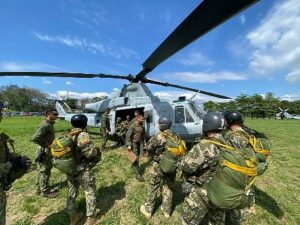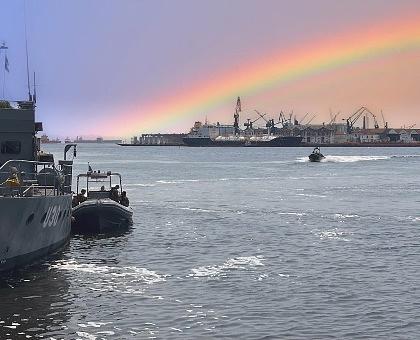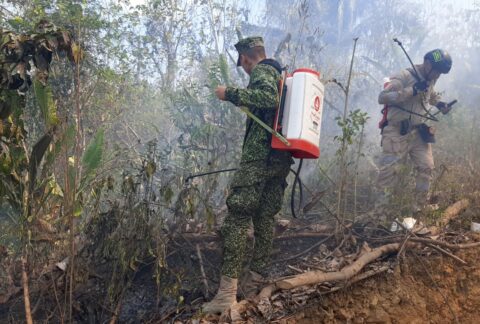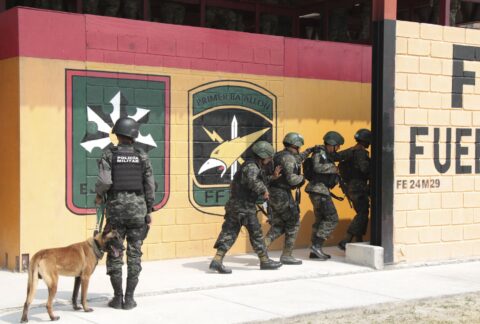As part of UNITAS 2022, a multinational amphibious operation was carried out on September 16, D-Day, in Itaoca, Espiríto Santo state, Brazil. The operation included a simulation of the rescue of endangered citizens from the coast of a country in conflict, through an amphibious incursion carried out by ships and aircraft from the Brazilian Fleet and Fleet Marine Force.
Prior to the landing of more than 1,000 soldiers from 12 countries during D-Day, Special Operations teams, members of the Combined Multinational Special Operations Force, commanded by the Brazilian Navy’s Naval Special Operations Command (CoNavOpEsp) infiltrated and left at strategic points to perform support tasks that would allow the landing of the Incursion Force. This Force had 158 special operators among Marines and combat divers from Brazil, Ecuador, Paraguay, Peru, the United States, and Uruguay — a total of 55 Brazilians and 103 foreigners.
Workshop Phase
Prior to developing the tactical theme, participants conducted a workshop to exchange tactics, techniques, and procedures (TTP). The Marine operators conducted military free-fall parachute training using UH-15 Super Cougar aircraft from the Brazilian Navy’s 2nd General Helicopter Squadron (HU-2), static line jump training using UH-1Y Venom aircraft from the USMC, as well as combat training in confined spaces and long range precision fire, conducted on board the Marine Corps Special Operations Battalion (Batalhão Tonelero).
The combat divers from the various countries trained in combat diving, deactivation of explosive devices, combat in confined spaces, and approaching opposing vessels, under the leadership of the Brazilian Navy’s Combat Diver Group (GruMEC).
Multinational Combined Special Operations Force

During the amphibious operation, the Combined Multinational Special Operations Force was given specific tasks such as establishing surveillance posts in order to issue early warning of any reinforcement of the enemy.
To accomplish their tasks, the Special Operations troops were divided into two Task Elements. The land part included amphibious commandos from the Tonelero Battalion, USMC Force Recon troops, amphibious commandos from Ecuador, Paraguay, and Uruguay, and three observers from France. The maritime part included Combat Divers from GruMEC, the SEAL Team, the Special Boat Team, and the EOD Team, all from the U.S. Navy, as well as combat divers from Ecuador and Peru.
The infiltrations took place before D-Day and were carried out using UH-15 Super Cougar and MH-60S Seahawk helicopters from the Brazilian Navy’s NAM Atlântico (A 140) and the U.S. Navy’s USS Mesa Verde (LPD 19), respectively, and also by means of air-cushioned landing craft launched from the Frigate Constituição (F 42).
During the operation, combat divers intercepted a ship suspected of entering the area of operations with illicit material using the visit, board, search, and seizure technique, employing GRuMEC’s Zodiac Hurricane H753 rapid response boats.
Brazilian Marine Corps Major General Claudio Eduardo Silva Dias, commander of Naval Special Operations, highlighted the importance of the exchange of experiences among the military, the successful mission of the Special Operations troops in UNITAS LXIII, and concluded by saying that “I consider that the purpose of the UNITAS operation, in the special operations part, was fully achieved, strengthening ties with partner nations, allowing the evolution of TTP and, most importantly, military integration, which allowed interoperability among the armed forces participating in the operation.”









